When it comes to creating effective advertising, A/B-Testingcan be the key to optimal results. Here you will learn how to identify through targeted tests which ads and target audienceswork best. This process, also known as Split Testing, allows you to make small adjustments and measure their impact on your campaign performance.
Key insights
- A/B tests help test targeted changes and improve ad performance.
- Always test only one variable at a time to obtain clear results.
- Choose an adequate budget and time frame for accurate results.
- Analyze KPIs such as click-through rate, conversion rate, and return on ad spend to make informed decisions.
Step-by-Step Guide for A/B Testing
Step 1: Define the Test Objective
The first step in setting up an A/B test on Facebook is to determine exactly what you want to test. This could be, for example, the image of an ad, the text, or the audience targeting. Think about what variables you want to change to optimize your campaign's performance.
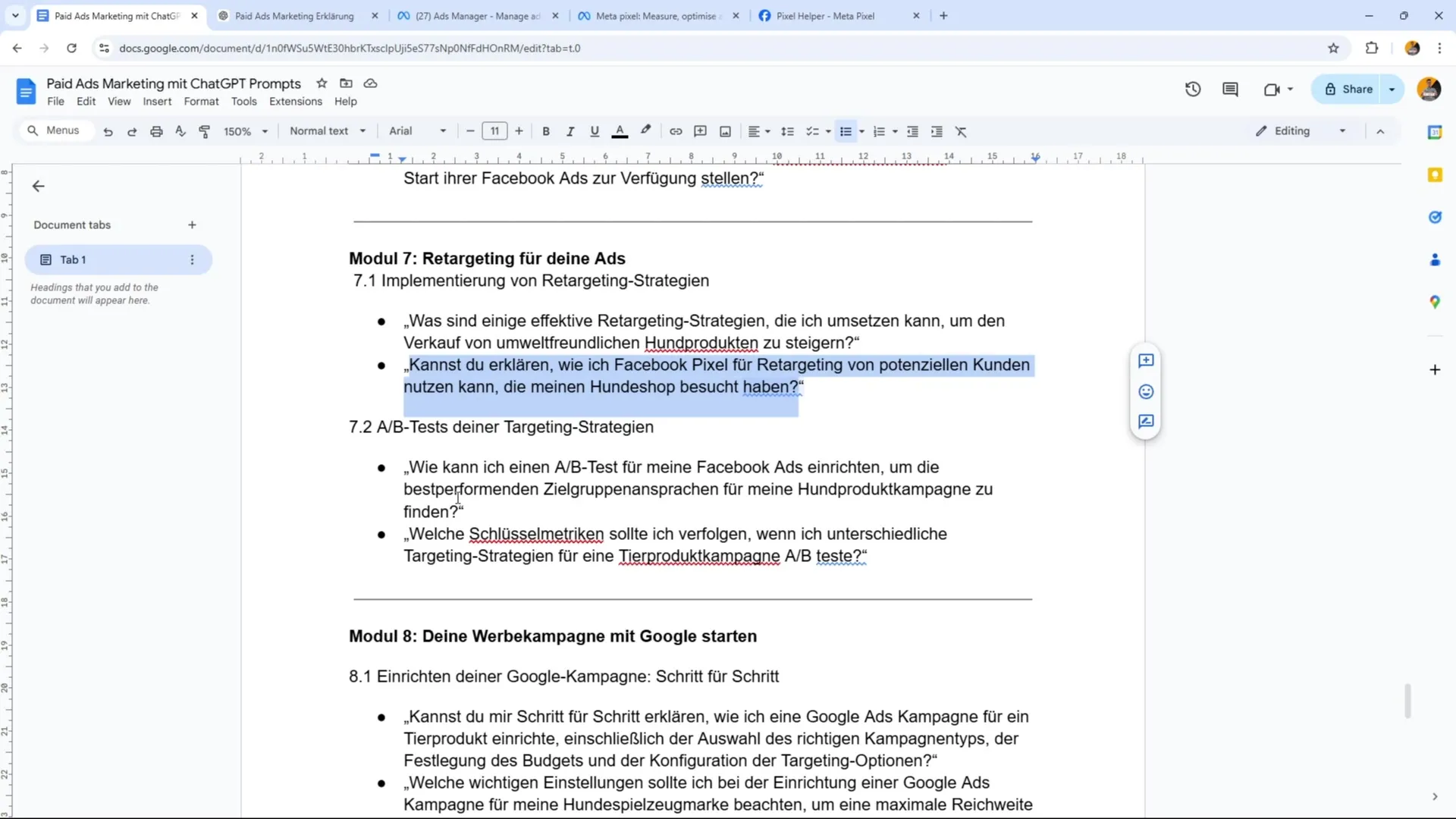
Step 2: Select the Test Variables
You have the option to test different components in your A/B test:
- Creatives: Here you can try out different images or videos while keeping the rest of the campaign the same.
- Target Audiences: Test different age groups or geographic locations to find out which audience responds better.
- Placement: Consider where your ads should be placed. Test Facebook against Instagram or other placements.
Remember that you should always test only one variable at a time. For example, if you change both the age and the target audience at the same time, it will be difficult to determine which factor caused the better performance.
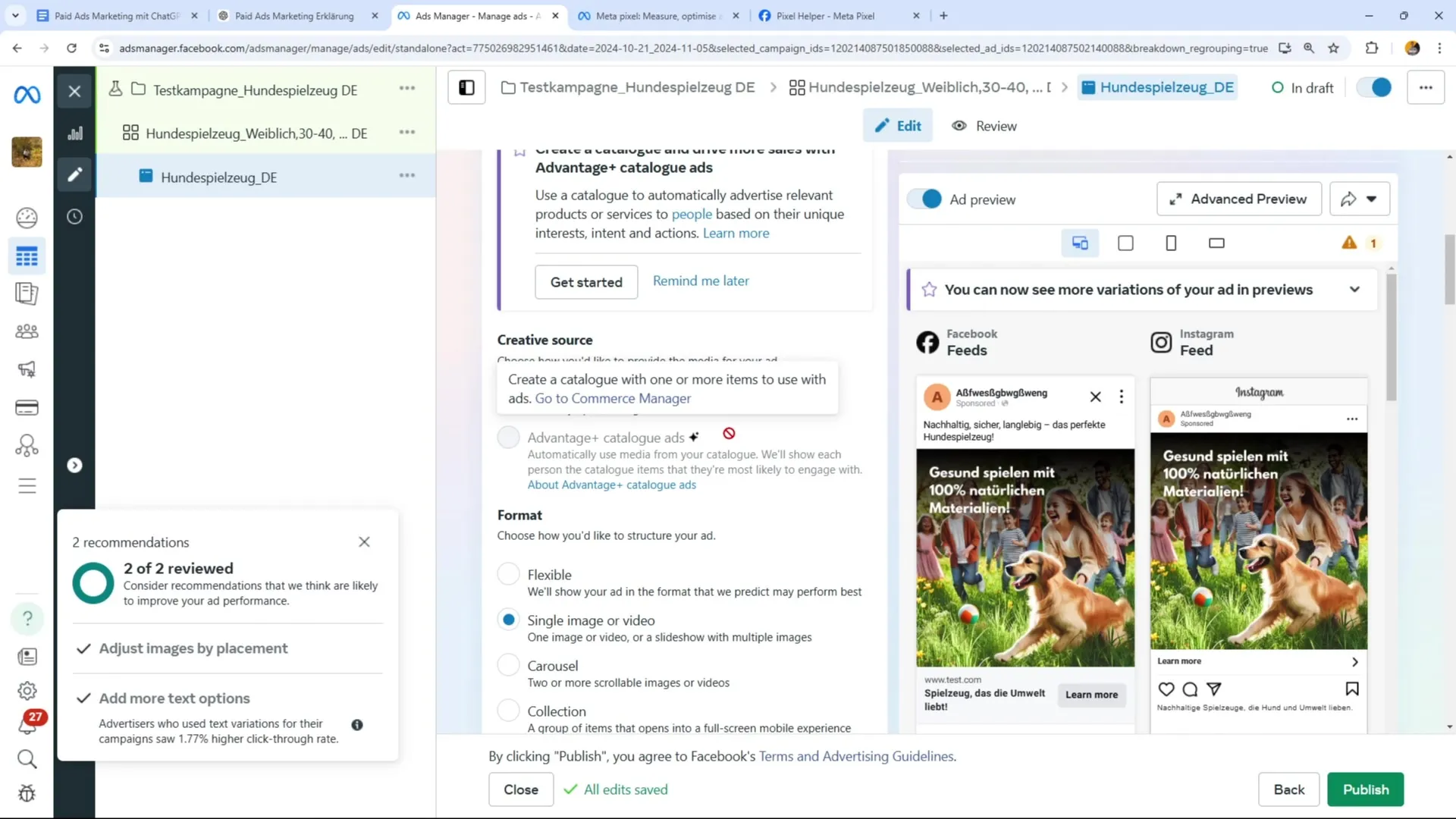
Step 3: Define the Campaign
After you have determined what you want to test, you need to create the campaign. Choose the campaign level and the desired objective. You can, for example, direct your advertising towards animal welfare and test different messaging styles to see which works best.
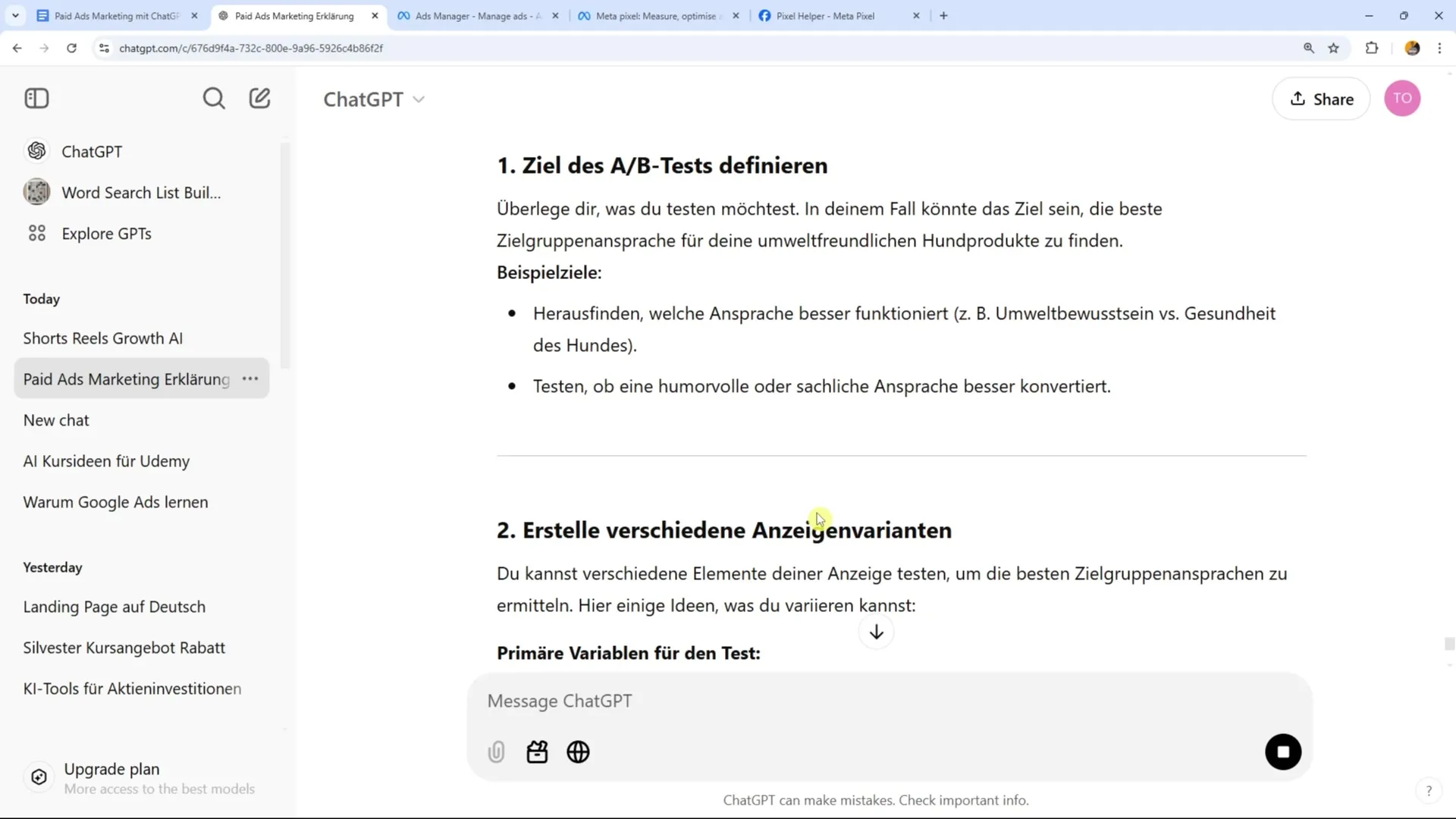
Step 4: Setting Budget and Time Frame
An A/B test requires a certain budget and time frame to deliver meaningful results. It is advisable to plan at least 20 euros per day to collect significant data. Keeping the budget low can affect the quality of your results. Set the test for at least 4 to 7 days, depending on your budget.
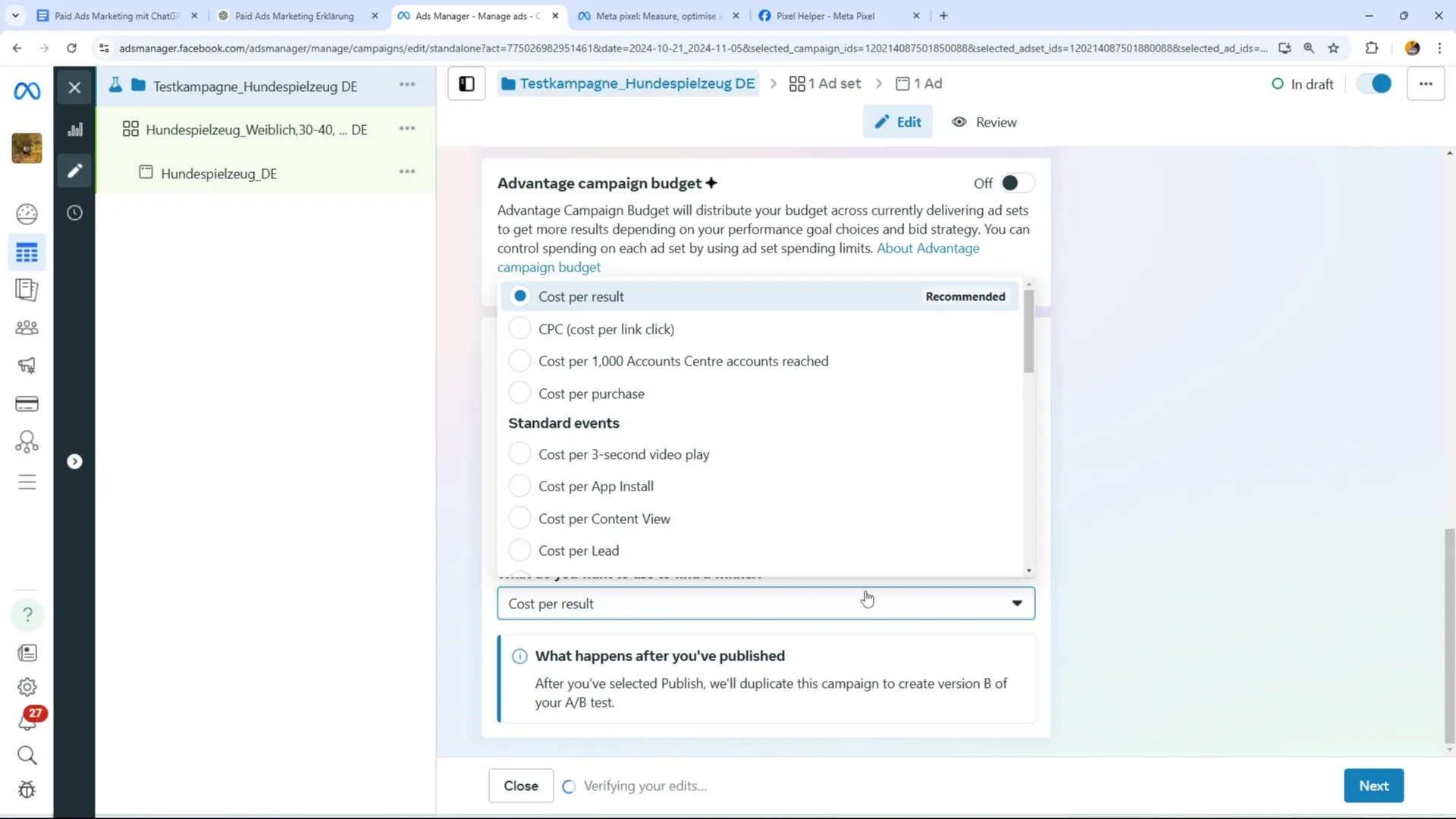
Step 5: Conducting the Test
Once your A/B test is set up, let it run for the specified duration. During this time, you will not make any changes. This ensures that you can obtain consistent data.
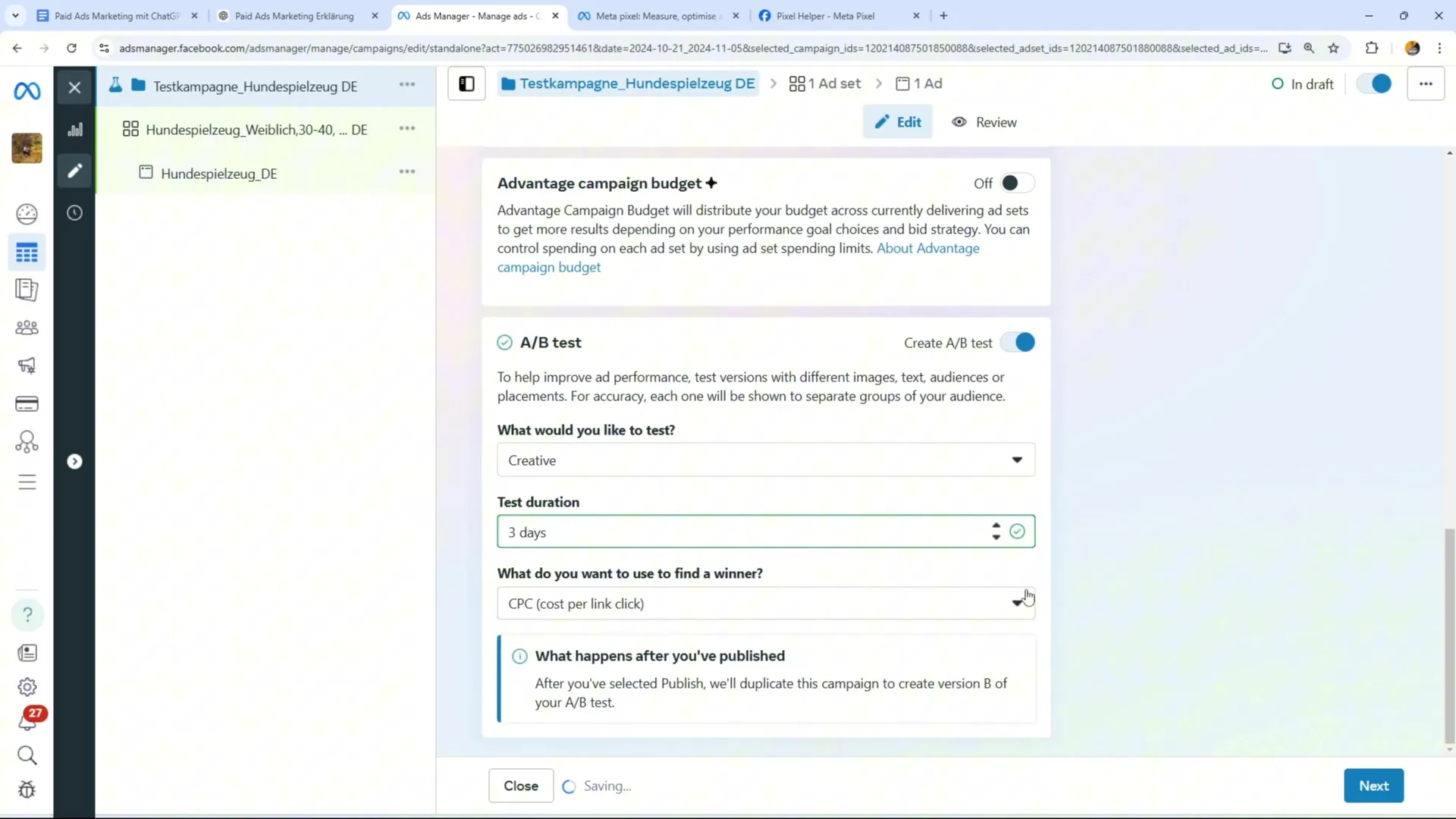
Step 6: Analyze the Results
After the test is completed, it's time for analysis. Pay attention to metrics such as the click-through rate, conversion rate, and cost per conversion. These metrics will give you insights into which ad or audience performed better.
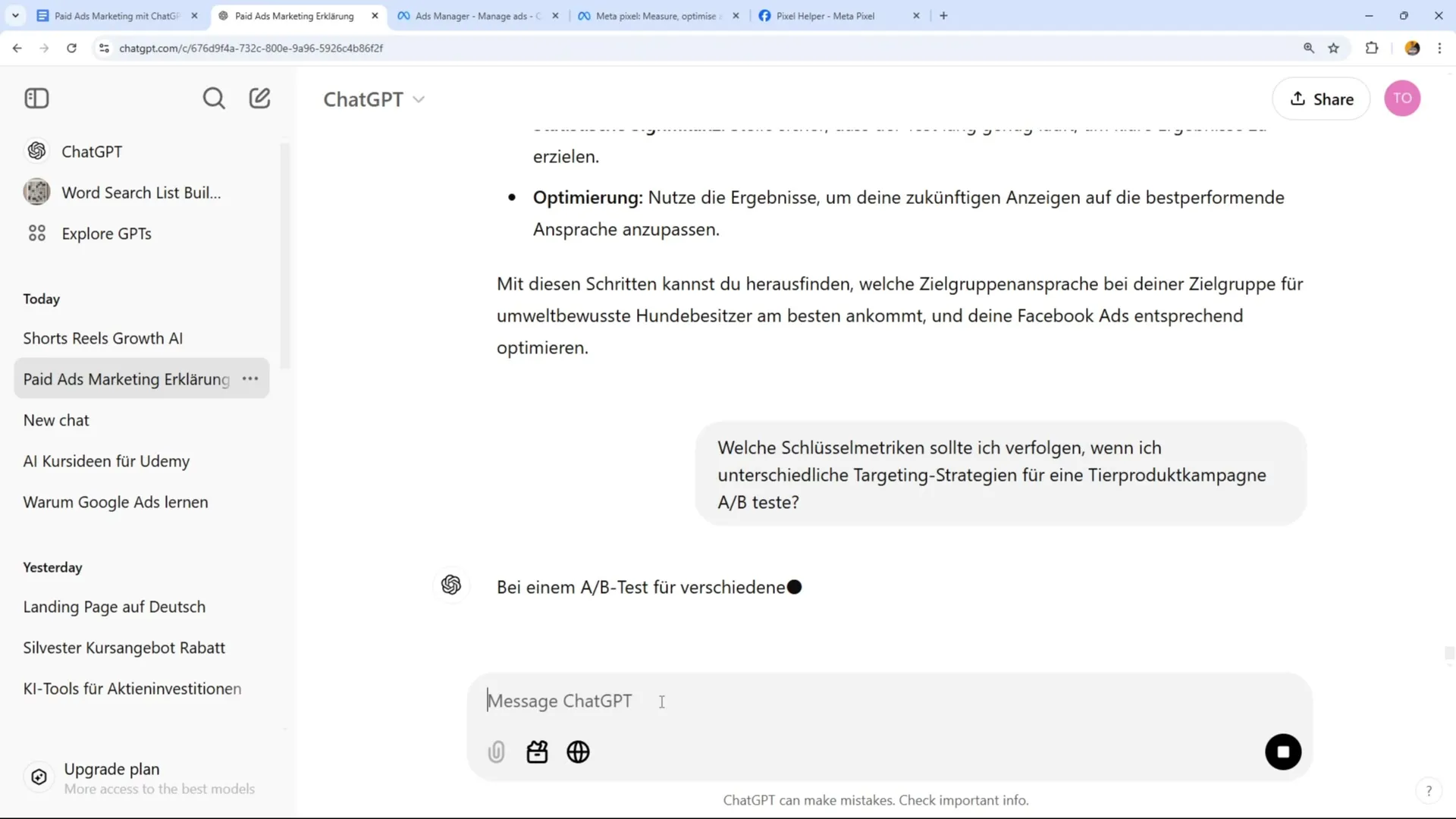
Step 7: Make Decisions
Based on the analysis, you can now make informed decisions. If one ad achieved higher conversion rates or a better return on ad spend compared to another, it makes sense to continue using it and potentially conduct further tests to improve performance.
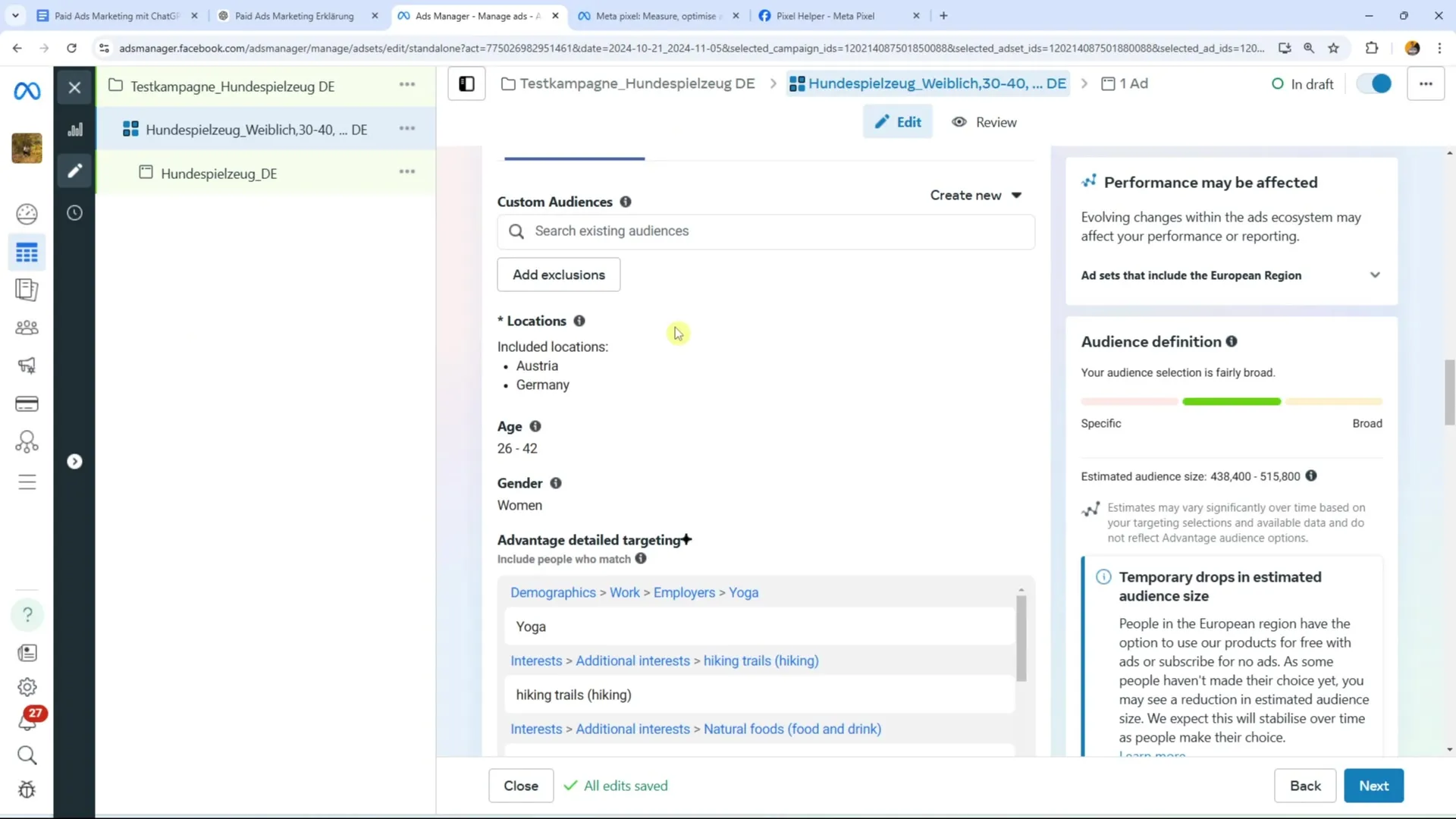
Summary – A/B Testing for Target Audiences and Ads
By implementing A/B tests, you can optimize your Facebook adsand find out which approaches work best. The organized steps from defining the test objective, selecting variables, to analyzing the results provide a clear framework to improve your advertising efforts.
FAQ
What is A/B Testing?A/B Testing is a method to test different versions of an ad and compare performance.
How should I set my budget for A/B tests?A minimum budget of 20 euros per day is recommended to collect significant data.
Why is it important to test only one variable at a time?This way, you can accurately determine which specific change influenced performance.
How long should I run an A/B test?At least 4 to 7 days to collect sufficient data.
Which metrics are important in analysis?Click-through rate, conversion rate, and return on ad spend are crucial for analyzing test results.


